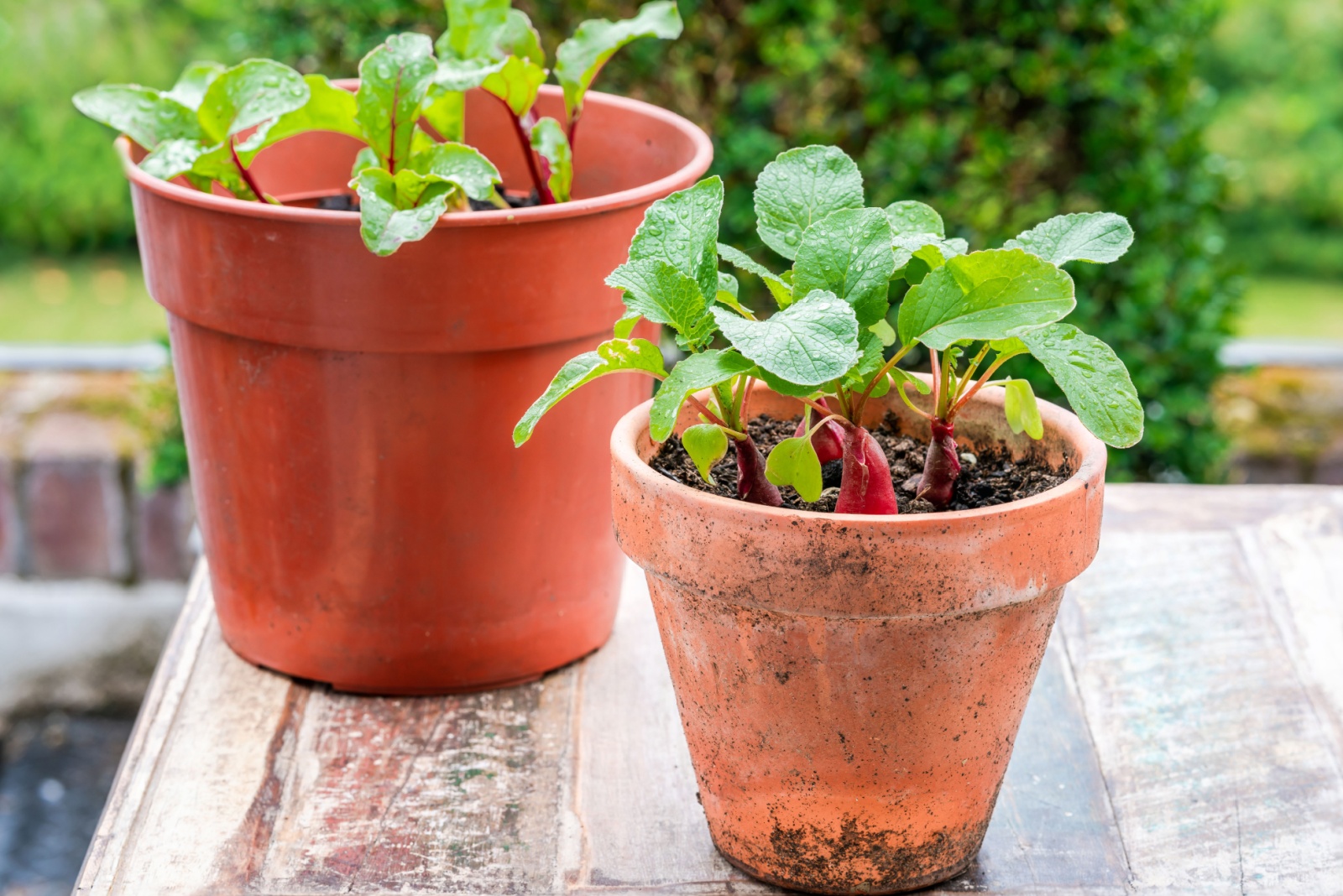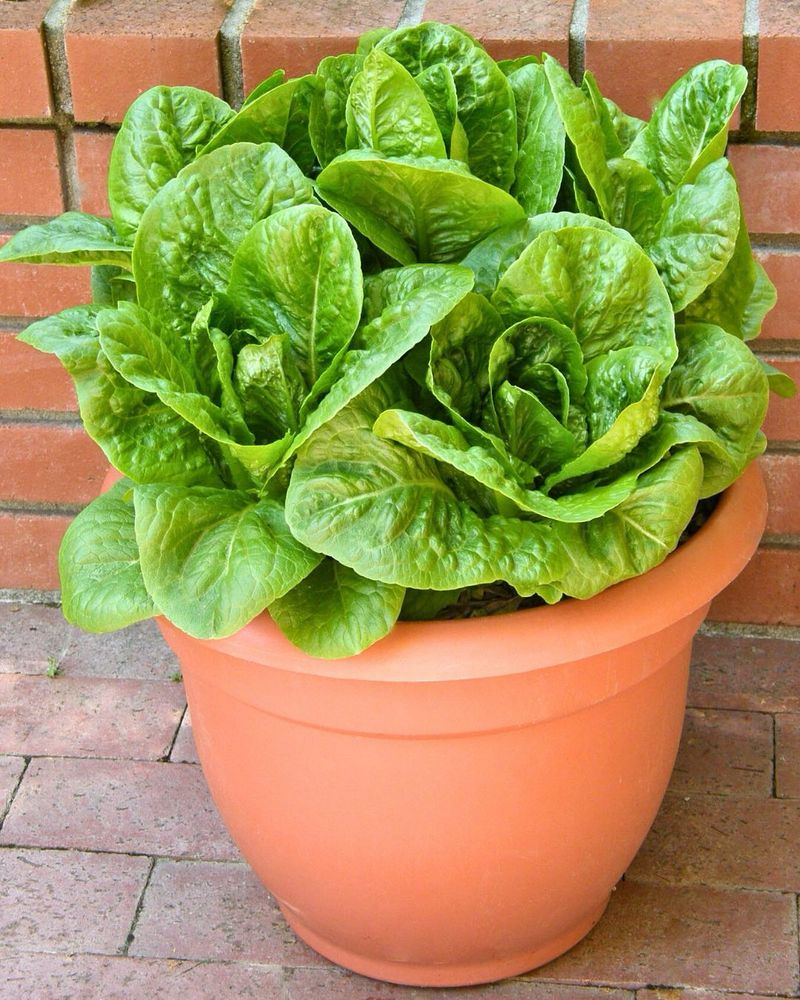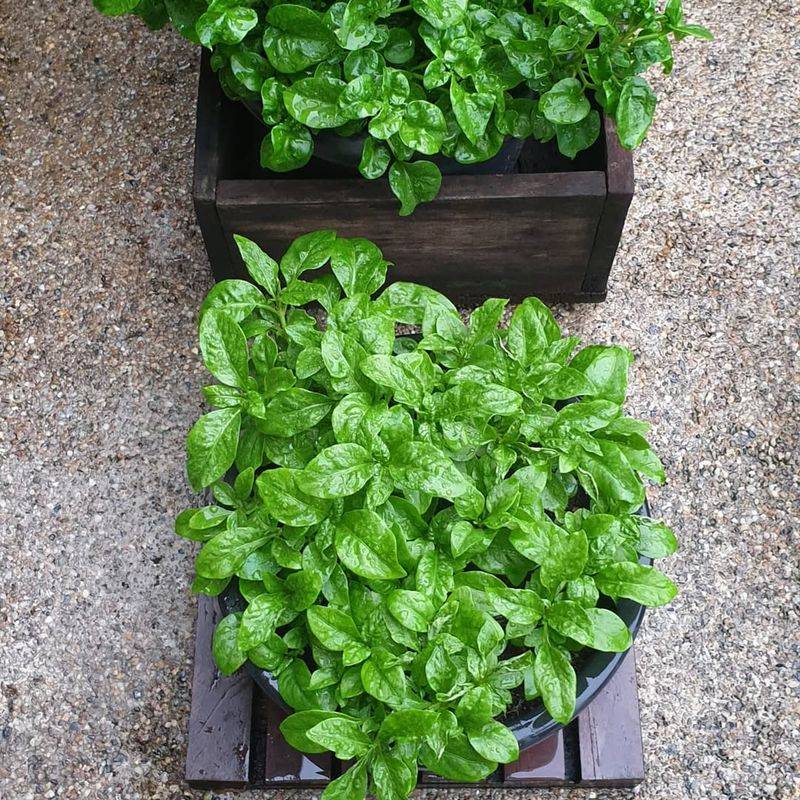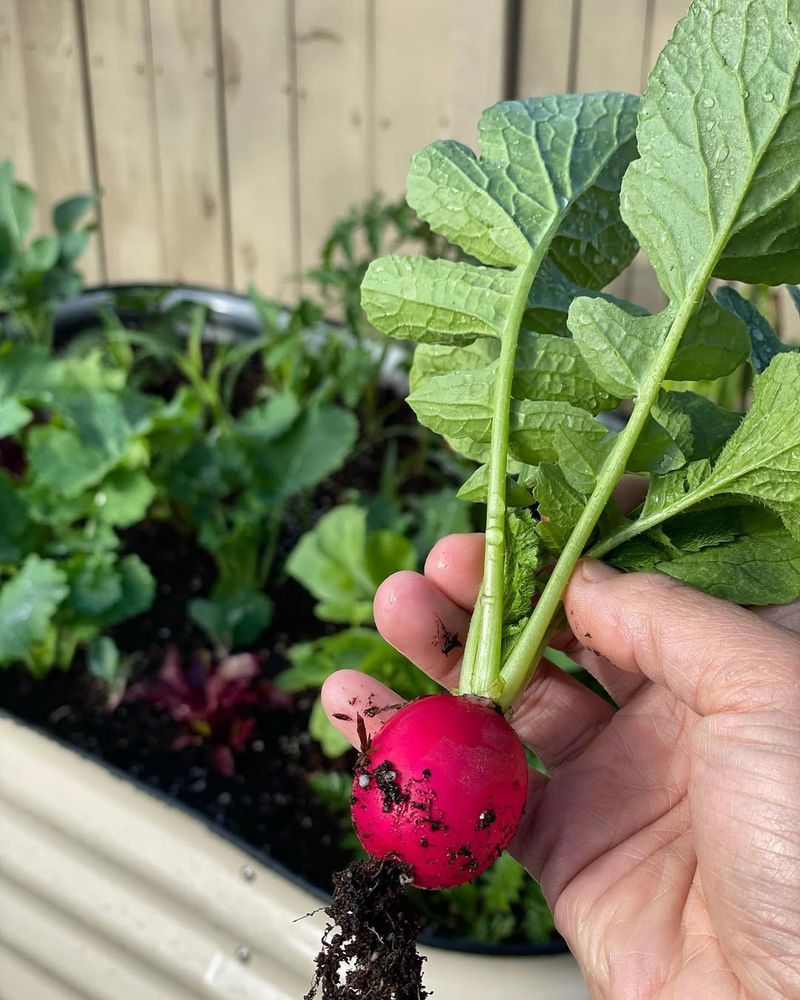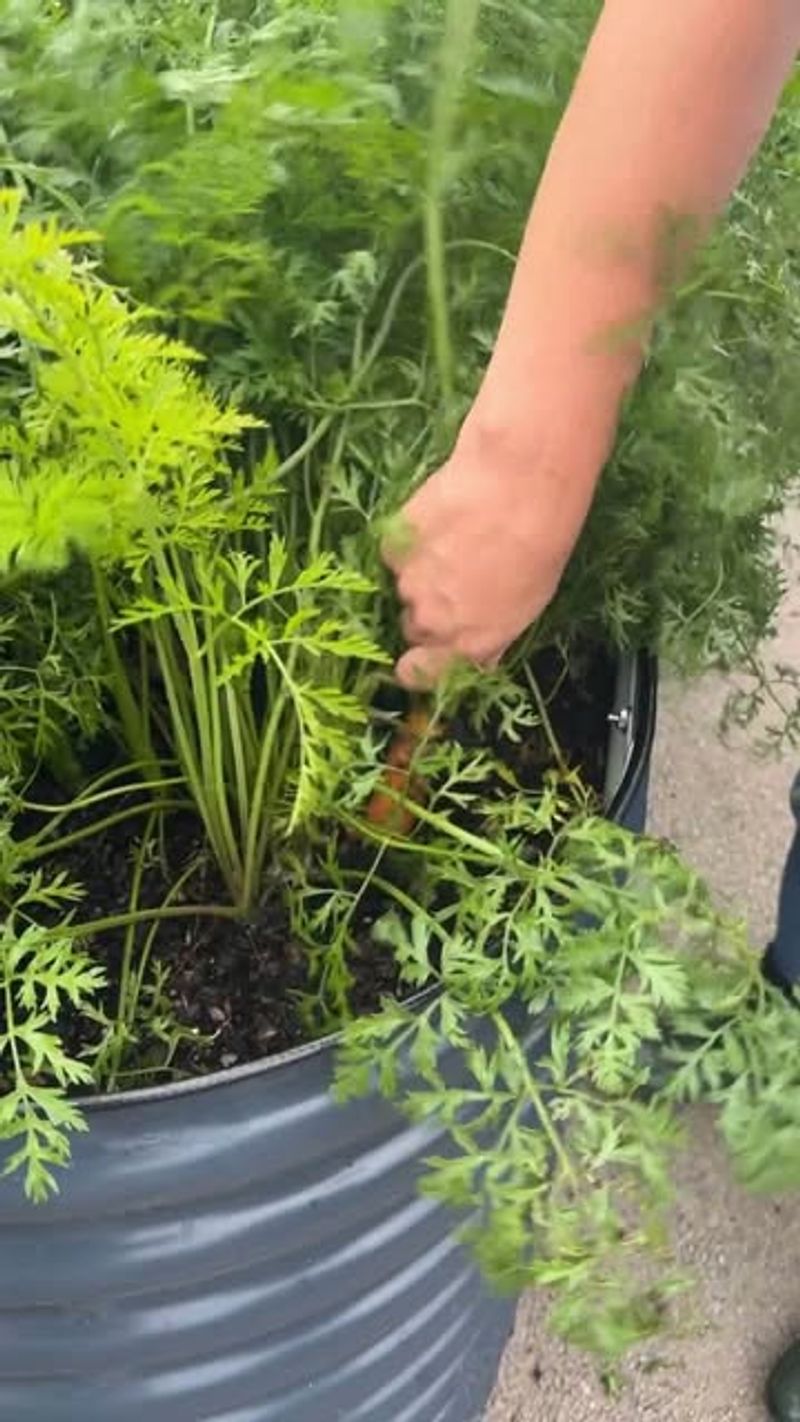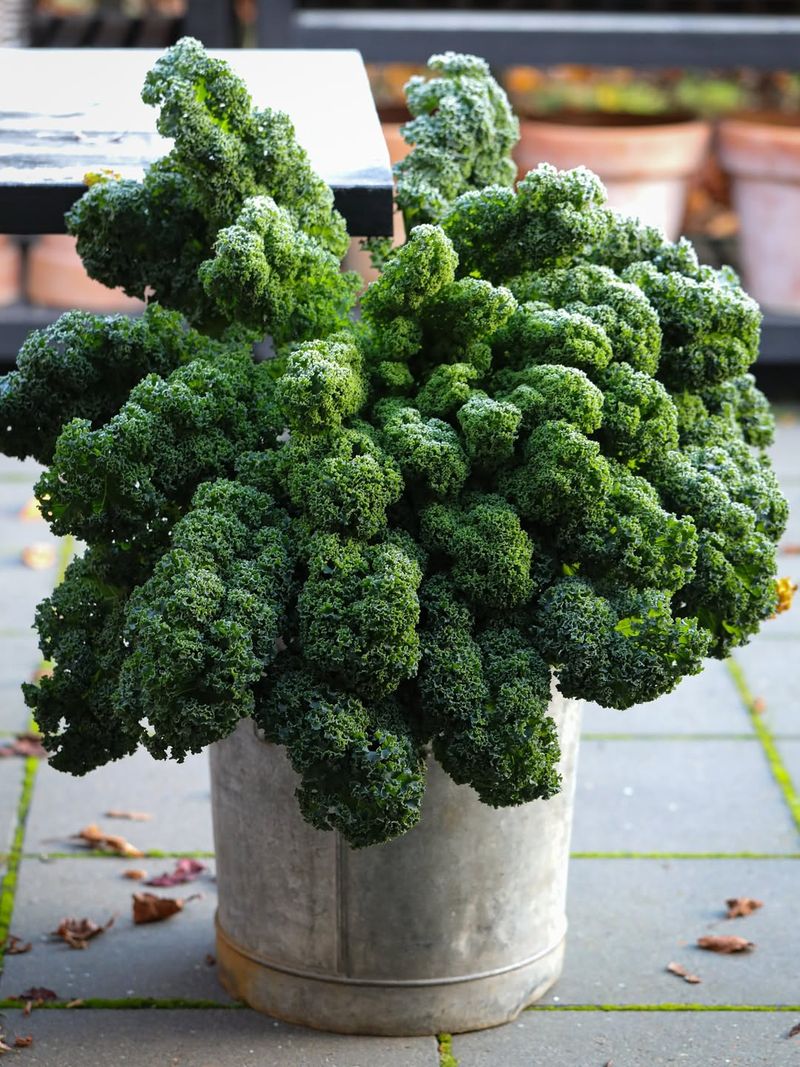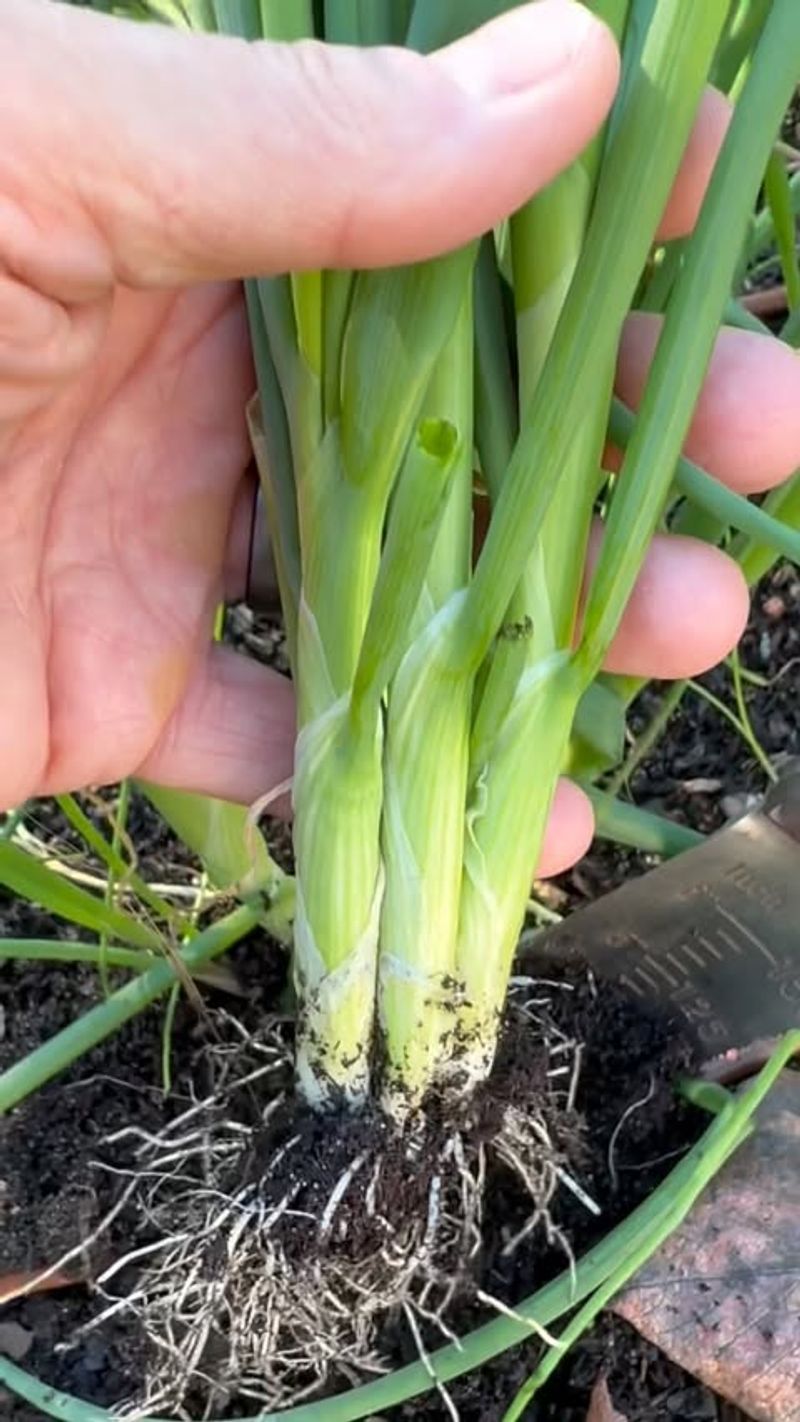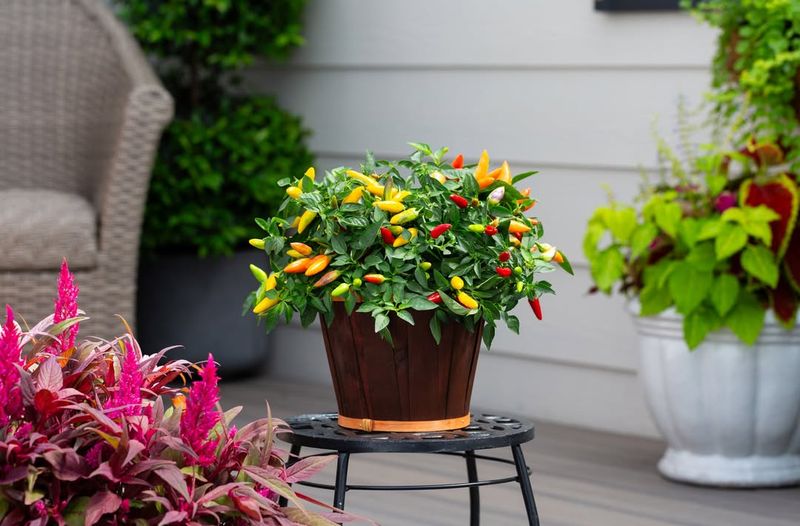New Hampshire gardeners deal with four seasons that refuse to play nice, but that hasn’t stopped many from growing fresh vegetables long after the garden beds are covered in frost.
With a few sturdy buckets and a smart choice of crops, year-round harvests become far easier than most people think.
Buckets warm faster in spring, drain well during summer storms, and can be scooted under cover when winter rolls in with its usual attitude.
Instead of wrestling with frozen soil or battling early frosts, gardeners get reliable control over moisture, temperature, and light—three things that traditional beds often fight against.
Even better, many vegetables don’t mind the cozy quarters, thriving in containers that can sit on balconies, porches, or sunny kitchen steps.
This setup keeps fresh produce within arm’s reach no matter the month.
For New Hampshire’s unpredictable climate, buckets offer a steady lifeline to crisp greens, tender roots, and flavorful herbs all year long.
1. Lettuce
Crisp, leafy lettuce thrives in buckets with just six inches of soil depth.
Place your container near a bright window or under grow lights, keeping temperatures between 60-70°F for best results.
Water regularly to maintain moist soil, and harvest outer leaves as they mature.
Loose-leaf varieties like buttercrunch and romaine work wonderfully indoors, producing fresh salad greens throughout winter months when grocery store options look sad and wilted.
2. Spinach
Spinach loves cool conditions, making it ideal for New Hampshire’s climate year-round.
A five-gallon bucket provides plenty of room for roots to spread and develop properly.
This nutrient-packed vegetable actually prefers cooler temperatures around 50-60°F, so unheated sunrooms or bright basements work perfectly.
Pick leaves from the outside working inward, allowing the center to keep producing.
Your homegrown spinach will taste sweeter and more tender than anything from the store.
3. Radishes
Fast-growing radishes reach harvest size in just three to four weeks, giving you quick results.
They need minimal space and grow happily in buckets as shallow as six inches deep.
Scatter seeds about an inch apart, thin seedlings to two inches, and keep soil consistently moist.
Radishes add a peppery crunch to salads and sandwiches.
Their speedy growth makes them perfect for kids learning to garden, and successive plantings every two weeks ensure a constant supply.
4. Carrots
Crunchy carrots need deeper buckets—at least 12 inches—to accommodate their long taproots.
Choose shorter varieties like Thumbelina or Paris Market for container success.
Loose, sandy soil works best to prevent forked or twisted roots.
Thin seedlings to two inches apart once they sprout, and be patient as carrots take 60-80 days to mature.
The sweet reward of pulling your first homegrown carrot makes the wait worthwhile, especially during snowy New Hampshire winters.
5. Kale
Hardy kale survives freezing temperatures and actually tastes sweeter after frost exposure.
A five-gallon bucket gives this superfood plenty of growing space for its extensive root system.
Harvest lower leaves first, allowing the plant to continue producing from the top for months.
Kale tolerates low light better than many vegetables, though it grows faster with six hours of sunlight or equivalent grow lights.
Toss fresh leaves into smoothies, soups, or baked chips for year-round nutrition.
6. Green Onions
Green onions regrow endlessly from their roots, making them the ultimate low-maintenance bucket crop.
Save the white root ends from store-bought bunches and plant them an inch deep in soil.
Within days, new green shoots emerge and reach harvestable height in two weeks.
Snip what you need with scissors, leaving roots intact for continuous regrowth.
A single bucket on your kitchen windowsill provides fresh onions for tacos, stir-fries, and garnishes without repeated grocery trips.
7. Cherry Tomatoes
Compact cherry tomato varieties like Tiny Tim or Window Box Roma flourish in five-gallon buckets.
They require more light than leafy greens—at least eight hours daily from south-facing windows or grow lights.
Add a small stake for support as plants grow taller and heavier with fruit.
Keep soil evenly moist and feed with liquid fertilizer every two weeks.
Fresh tomatoes in January taste like summer sunshine, brightening dreary New Hampshire winter days with bursts of sweetness.
8. Peppers
Compact pepper varieties adapt beautifully to bucket life when given warmth and bright light.
Small hot peppers like jalapeños or ornamental varieties need less space than large bell peppers.
Maintain temperatures above 65°F and provide at least six hours of bright light daily.
Peppers grow slowly indoors but reward patience with colorful, flavorful harvests.
A sunny south-facing window in a heated room creates the perfect microclimate.
Fresh peppers add zip to winter meals when outdoor gardens lie dormant under snow.
9. Herbs (Basil, Parsley, Cilantro)
Fresh herbs transform ordinary meals into culinary adventures, and they thrive in bucket gardens year-round.
Basil loves warmth and bright light, while parsley and cilantro tolerate cooler spots.
Plant each herb in its own bucket or combine compatible varieties together.
Pinch stems regularly to encourage bushy growth and prevent flowering.
Nothing beats the aroma of fresh herbs snipped straight from your kitchen garden into soups, sauces, and salads during long New Hampshire winters when fresh flavors feel scarce.

